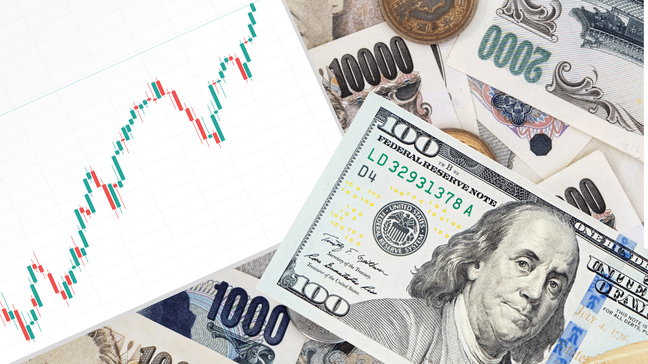The risk appetite weakened early Thursday as growing fears from the Middle East joined pre-data anxiety, as well as hawkish bias surrounding the US Federal Reserve (Fed).
Against this backdrop, the US Dollar Index (DXY) struggles to defend the previous day’s recovery from a two-week low while EURUSD and GBPUSD edge higher.
However, the USDJPY grabs the limelight by rising to a fresh high since 1990 ahead of Friday’s Bank of Japan (BoJ) Monetary Policy announcements.
It’s worth noting that the AUDUSD and NZUSD rose for the fourth consecutive day amid optimism surrounding the Reserve Bank of Australia (RBA) and the Reserve Bank of New Zealand’s (RBNZ) next moves. That said, USDCAD faded the previous day’s corrective bounce amid firmer Oil prices, ignoring downbeat catalysts surrounding Canada, whereas USDCHF seesaws at the highest level since October 2023.
Elsewhere, Gold Price remains lackluster after printing a three-day losing streak, poking short-term key support by the press time, while the US Treasury bond yields edge higher and the Asia-Pacific shares drift lower.
Moving on, BTCUSD and ETHUSD pare the biggest daily loss in a week, marked the previous day, as traders reassess concerns about the spot Ethereum ETF approvals.
Following are the latest moves of the key assets:
- Brent oil picks up bids to reverse the previous day’s pullback from the weekly high, mildly bid near $88.20 by the press time.
- Gold remains side-lined around $2,318-20 after falling in the last three consecutive days.
- The USD Index takes offers to reverse the previous day’s recovery, down 0.16% intraday near 105.65 at the latest.
- Wall Street closed mixed and so did the Asia-Pacific stocks. Further, European and UK shares lack clear directions during the initial trading hour.
- BTCUSD and ETHUSD reverse the previous day’s losses with mild intraday gains to around $64,500 and $3,170 as we write.
USDJPY grabs attention by approaching 160.00…
Be it the USDJPY pair’s run-up to the multi-year high or Japanese policymakers’ resistance to accept the Yen weakness, not to forget the cautious mood ahead of the US Q1 GDP, BoJ meeting and the Core PCE Price Index, the Yen pair is in the spotlight. It’s worth noting that the quote’s run-up to the 34-year high justifies multiple catalysts ranging from the US Dollar’s rebound to the market’s anxiety, as well as a likely longer gap between the monetary policies of the Fed and the BoJ.
On Wednesday, the US Durable Goods Orders for March offered an upside surprise by rising 2.6% MoM versus 2.5% expected and 1.3% prior (revised). Apart from the upbeat US data, the risk-off mood also underpinned the US Dollar Index (DXY) rebound from a two-week low. However, softer prints of the Core Durable Goods Orders and consolidation ahead of the US Q1 GDP challenges the Greenback buyers of late.
Talking about the key risk catalysts, the UK's Office for National Statistics (ONS) conveyed a 66% drop in the cargo passing through the Suez Canal from mid-December 2023 to early April 2024 and flagged inflation woes. Further, Reuters cited satellite images to convey the news suggesting China’s involvement in harboring ships tied to North Korea-Russia arms transfers, which in turn sours the mood as the US Secretary of State Antony Blinked visits China. In the initial statements of his visit, Blinken said, “US seeks a healthy economic competition with the PRC and a level playing field for U.S. workers and firms operating in China.”
While the US Dollar’s recovery challenged the EURUSD bulls on Wednesday, the major currency pair regained upside momentum early Thursday amid hawkish comments from the European Central Bank (ECB) officials and upbeat data from Germany. That said, President of the Deutsche Bundesbank and Member of the ECB Governing Council Joachim Nagel said, “June rate cut not necessarily followed up by a series of rate cuts.” Further, Germany’s IFO Business Climate Index for April came in at 89.4 versus 88.8 expected and 87.9 prior. Additionally, the IFO’s gauges for Current Assessment and Expectations also rose past previous readings and market forecasts and put a floor under the Euro.
On the other hand, GBPUSD ignored the US Dollar’s recovery, as well as downbeat UK data, to refresh the weekly top, grinding higher of late. That said, the UK’s CBI Industrial Order Expectations for April slumped to a three-month low of -23 versus -16 expected and -18 prior. The reason could be linked to the early-week statements from the Bank of England (BoE) officials who pushed back concerns surrounding rate cuts.
A senior member of Japan’s Lower House Financial Affairs Committee Takao Ochi said a move in USDJPY towards 160 (or 170) could prod action from policymakers as they would deem that as being "excessive". On the same line were comments from Japan’s Chief Cabinet Secretary Yoshimasa Hayashi who showed readiness for full response to the rapid FX moves which are undesirable. Hence, the comments challenging the Yen pair’s further upside seem to play their roles ahead of the key data/events even if the firmer yields keep the USDJPY bulls hopeful.
The US Dollar’s strength also exerts downside pressure on Crude Oil, apart from weakening the Gold Price, even as the weekly US Oil inventory data suggests a heavy draw in the stockpiles compared to the previous build. The reason could also be linked to the reduction in the risk-negative headlines from the Middle East, as well as the market’s preparations for today’s US Q1 GDP and Friday’s US Core PCE Price Index, also known as the Fed’s preferred inflation gauge.
On a different page, the USDCAD snapped a five-day losing streak with a heavy rebound as the US Dollar’s rebound joined a softer price of Canada’s key export item, namely the Crude Oil, as well as the downbeat data from Canada and dovish Bank of Canada (BoC) Minutes. That said, Canada’s Retail Sales came in -0.1% for February compared to +0.1% expected and -0.3% prior while the BoC Minutes stated that the policymakers agreed that any monetary policy easing would probably be gradual.
- Strong buy: USDCAD, USDJPY, US Dollar
- Strong sell: AUDUSD, NZDUSD, GBPUSD
- Buy: BTCUSD, ETHUSD, Nasdaq, Gold
- Sell: DAX, FTSE 100, BTCUSD, EURUSD
A slew of US data in the spotlight…
While the USDJPY is undoubtedly the key pair for momentum traders to watch, a slew of US data will entertain the market players moving forward. Among them, the first readings of the US first quarter (Q1) 2024 Gross Domestic Product (GDP) will gain major attention. Also important will be the weekly US Jobless Claims and monthly prints of the US Pending Home Sales and Kansas Fed Manufacturing Activity Index.
Given the recent hawkish bias about the Fed backed by the positive performance of the US macros, any further positive developments in the US data could allow the US Dollar to pare the weekly loss and weigh on the commodity prices. Among them, the Gold’s weakness past $2,298 will be crucial to observe as it can trigger a notable fall in the precious metal prices ahead of next week’s FOMC.
Following the aforementioned US data, the early Friday’s monetary policy meeting from the Bank of Japan (BoJ) and the US Core PCE Price Index, also known as the Fed’s preferred inflation gauge, will also be important to watch and can trigger notable USDJPY moves. That said, a likely hawkish BoJ could activate the much-awaited pullback in the Yen pair but firmer US inflation clues can put a floor under the USDJPY prices.
May the trading luck be with you!




